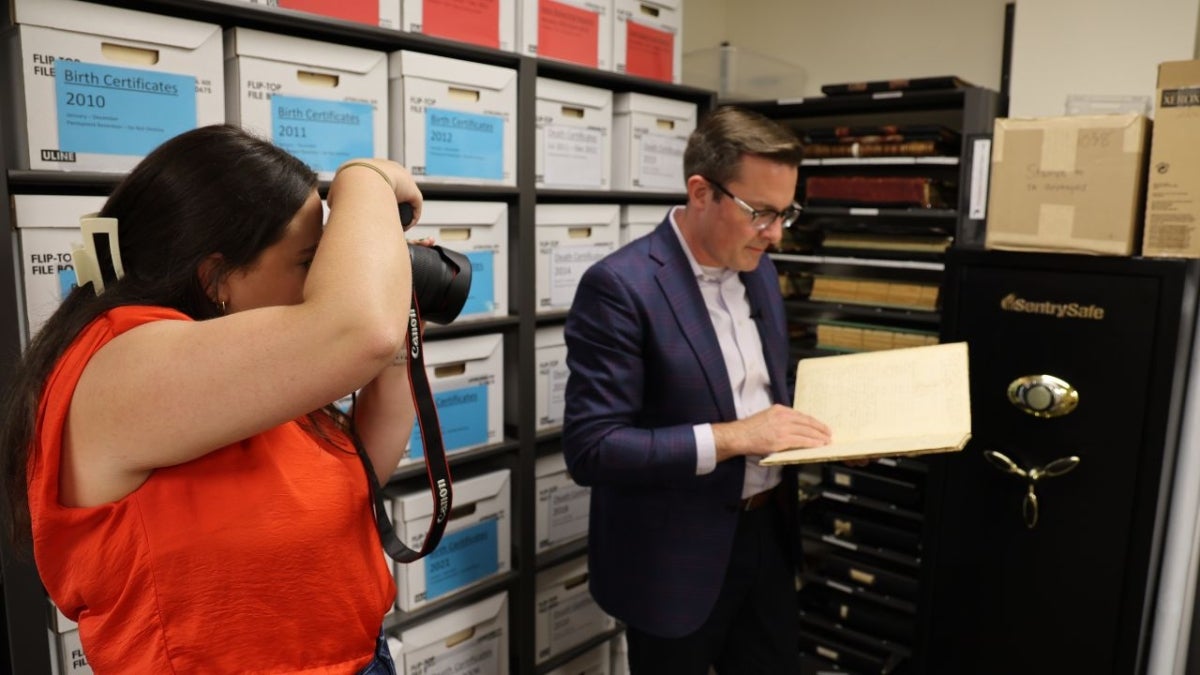Editor's note: This is part of our weeklong monsoon series; to read the first installation, "Gully washers and boulder rollers: How monsoons shape the desert," click here. For the final story, looking at monsoons from a Native American cultural viewpoint, click here.
Public fascination with the extreme weather of monsoons is surpassed only by the media’s, which has seen some interesting developments in its coverage of storm events in recent years, due in large part to social media’s influence.
In 2012, the Arizona Department of Transportation garnered attention with a dust storm awareness campaign on social media that encouraged people to submit “haboob haikus,” and in 2016, the Arizona Republic dedicated an entire story solely to monsoon social media posts.
Why the fascination with storms to begin with? How does social media play into that? What are the risks and benefits?
To gain some insight, ASU Now consulted with Alexander Halavais, an associate professor in ASU’s School of Social and Behavioral Sciences, and Jessica Pucci, ethics and excellence professor of practice at ASU’s Cronkite School of Journalism and Mass Communication.
Halavais specializes in ways in which social media change the nature of scholarship and learning and allow for new forms of collaboration and self-government. Pucci leads social media and analytics for Cronkite News, the news division of Arizona PBS, and also teaches a course in analytics and audience engagement.
Here’s what they had to say:
(Responses have been lightly edited for length and content.)
Alexander Halavais
Question: Why do monsoon and big-storm stories do so well in the media?
Alexander Halavais: I think there are a bunch of reasons. Large-scale weather phenomena are one of the few things that seem to have an effect on everyone relatively equally across walks of life. If you live in Phoenix, a monsoon is going to have an effect on your life, along with your fellow residents. But really large-scale weather phenomena do well in the news media in large part because they are relatively easy to cover and fit into the routines of the journalist. Experts are easy to find, officials have a line ready and there is a clear connection to a local audience. They are, in some ways, tailor-made for the news values journalists favor.
Q: How has social media affected news coverage of monsoon storms?
Jessica Pucci
Jessica Pucci: Monsoons are not only highly visual — we’ve all seen the jaw-dropping before-the-dust/after-the-dust photos — but they’re phenomena exclusive to the Southwest. Visual content plays well in social media; not only is it highly shareable, but Facebook’s algorithm gives weight to video. Add to that striking imagery of a weather event that users outside the Southwest are unlikely to ever see in person, and you’ve got a perfect storm of social attention … no pun intended.
Q: What’s behind that phenomenon? Are people genuinely coming together as a community to inform each other out of concern for the safety of others, or are people just showing off who could get the best Instagram photo?
AH: I think in some cases people may share news or information in order to help others, but often it is an effort to either come together as a community over a shared experience, or to share locally interesting extremes with friends and family not affected. Certainly, there's some showing off going on: When I lived in Buffalo, it was a picture of a wall of snow outside my front door, and here it is 119-degree days or a thousand-foot-high wall of sand moving across the Valley.
Q: What are the risks and benefits?
JP: User-generated content allows newsrooms to cover weather events more widely than ever before — and that’s particularly impactful during monsoons, which can appear drastically different between locations a few miles apart. Reporters can’t be everywhere at once, so engaging with audiences to not only learn and see more, but establish our newsrooms as authoritative, trustworthy sources of information is important.
Social networks — particularly Twitter — help newsrooms get live, real-time weather information into users’ hands quicker than ever, which is undoubtedly a public good. But social media can also hasten the spread of misinformation. It’s critical that reporters and social media managers work diligently to verify audience accounts of weather events before sharing them – a simple reverse image search or provenance check using tools like TinEye can mean the difference between sharing a helpful update and radiating a fake, Photoshopped or old monsoon image.
AH: There are certainly examples of social media being helpful in recovery from natural disasters, but at least locally, storms rarely rise to that extreme. I think they serve a function of reminding people to prepare for such events.
I suspect that the most helpful kinds of contributions are not in images and stories but something a bit lower-level. When Waze users either directly or indirectly help me to avoid flooded sections of the road or accidents, that is certainly helpful. I do suspect that such sharing is helpful, but perhaps in not exactly practical ways. I think it brings local communities together in the face of shared inconvenience and lets us tell stories that connect us, and I think that can be important.
Top photo courtesy of Pixabay.com
More Law, journalism and politics

Native Vote works to ensure the right to vote for Arizona's Native Americans
The Navajo Nation is in a remote area of northeastern Arizona, far away from the hustle of urban life. The 27,400-acre reservation is home to the Canyon de Chelly National Monument and…

New report documents Latinos’ critical roles in AI
According to a new report that traces the important role Latinos are playing in the growth of artificial intelligence technology across the country, Latinos are early adopters of AI.The 2024 Latino…

ASU's Carnegie-Knight News21 project examines the state of American democracy
In the latest project of Carnegie-Knight News21, a national reporting initiative and fellowship headquartered at Arizona State University’s Walter Cronkite School of Journalism and Mass Communication…


